In 1815, the series of wars that had lasted more than two decades finally drew to an end. The resulting "Pax Britannica" would last almost a century, although it was not entirely peaceful, and coastal defenses would often find themselves on the front lines. Naval power focused on projecting influence ashore instead of on fleet battles,1 both in the wider world as a result of European colonial expansion, and in Europe as a result of changes in strategy driven by new technology. Some countries also focused on coastal defenses as a cheaper alternative to fleet power, most notably the US.
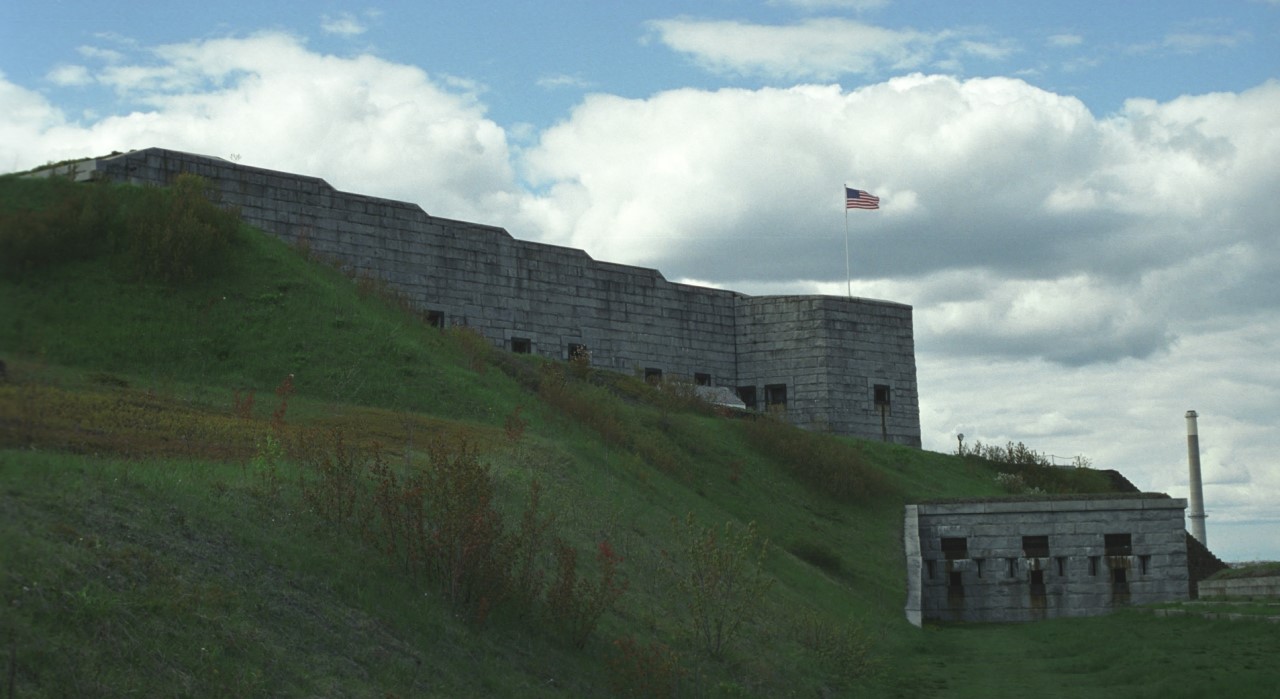
Fort Knox, Maine, a third-system fort2
In 1816, Congress authorized a third fortification program, which would prove a marked departure from the First and Second Systems. The Third System was built in the absence of any specific threat, intended instead to provide long-term protection by a well-planned series of fortifications. In keeping with this long-term approach, a board was appointed to designate the locations of fortifications, prioritize them, and supervise planning and construction. As a result, the Third System would be much more coherent than the previous fortification efforts, and many of the results remain standing today.
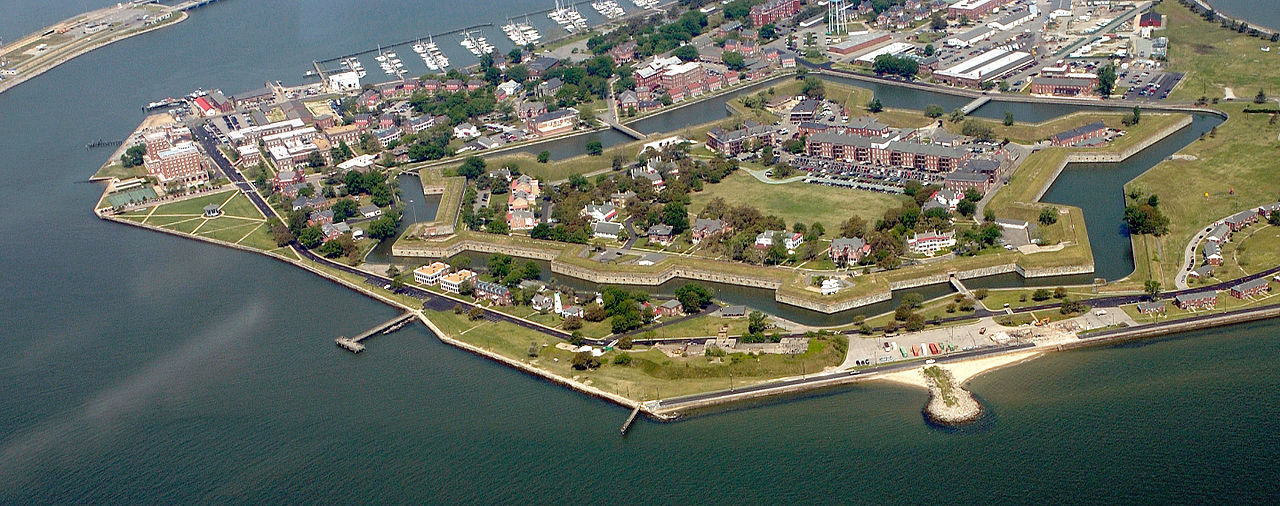
Fort Monroe, now a museum
It took five years for the board to issue its first report, recommending 18 sites be fortified with the highest urgency, and 32 more at lower priority levels. Initially, existing First and Second System fortifications were ignored, but soon financial constraints forced most of them to be modernized and incorporated into the Third System. Most of the Third System forts were of the model pioneered by Castle Williams of the Second System, with pure masonry construction and one or more tiers of casemated guns firing through the wall. The first of these forts to be started was Fort Monroe, positioned to protect the naval base at Norfolk. Like most of the forts of the Third System, it was a polygonal bastion fort, although Fort Monroe was the largest by area in the entire system, equipped with positions for over 400 guns. Only one fort was fitted for more guns, Fort Jefferson in the Florida Keys, with 450 gun emplacements to protect a strategic anchorage that the Navy believed was vital to the defense of the Gulf Coast.
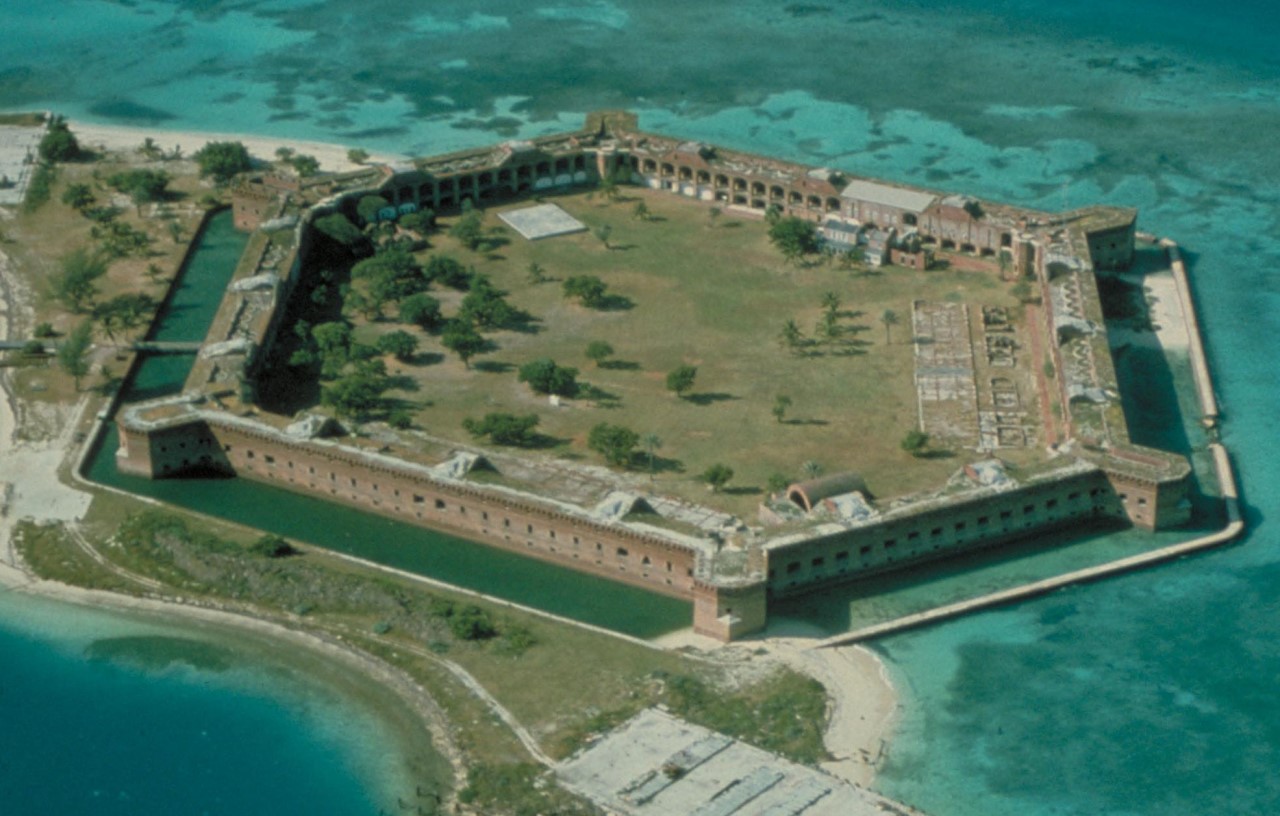
Fort Jefferson
This era also saw the first American contributions to fortification architecture, mostly through the efforts of Joseph Totten, an original member of the board behind the Third System who remained involved in the fortification program until his death in 1864 and whose influence was so great that the system is sometimes called the Totten System. His innovations included new casemate designs that reduced the size of the opening in the wall by as much as 80% while actually increasing the arc of fire, as well as the use of iron plates to strengthen these weak points in the walls. To reinforce them even more, shutters were fitted that could be opened before the gun was fired, and would automatically close afterwards.3 These were 2" thick, and provided the crew with protection from musket fire, case shot, shrapnel and other lightweight projectiles.
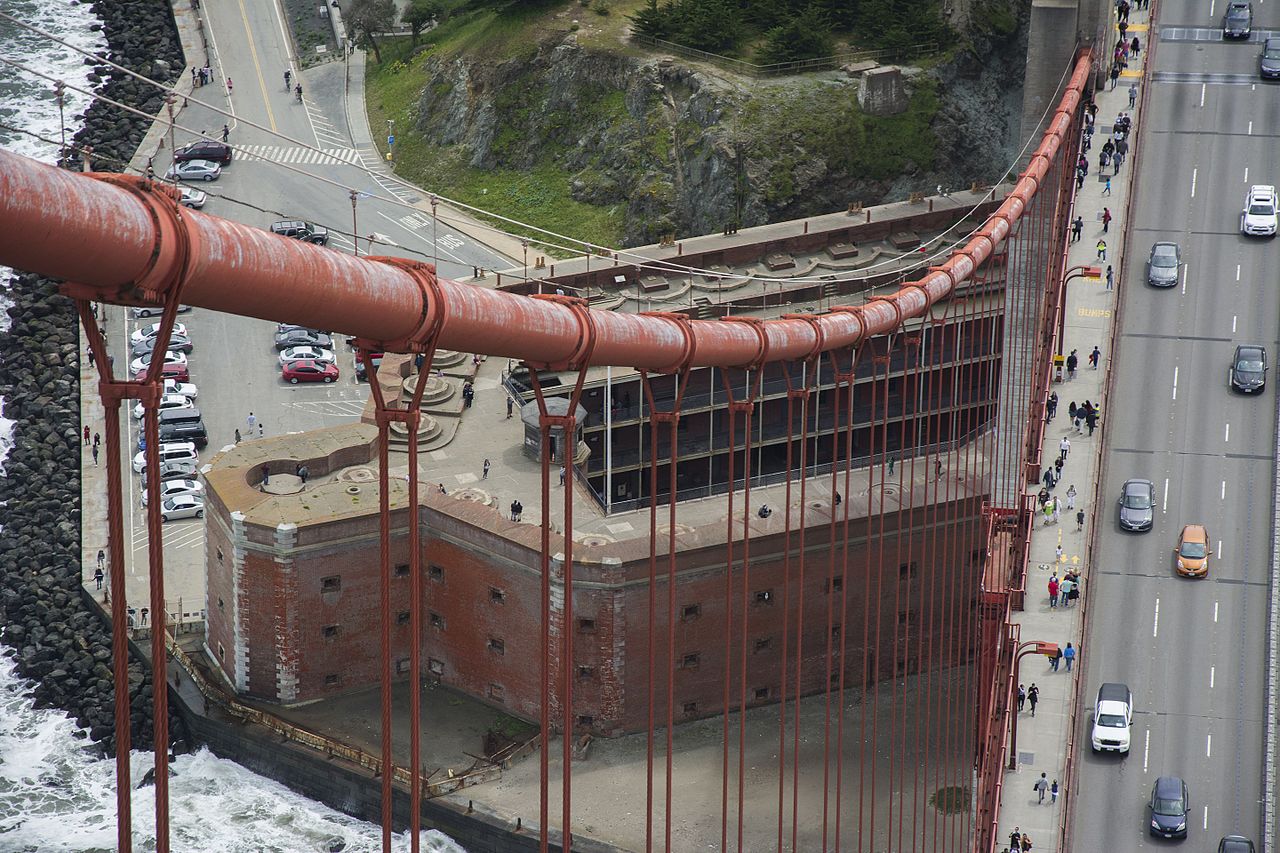
Looking down on Fort Point, from the towers of the Golden Gate Bridge
Of course, the Third System was far from unified in design. Early works like Fort Monroe and Fort Adams, Rhode Island, were large and irregular, while later installations tended to be smaller and geometrically regular, usually in the shape of a hexagon, sometimes truncated on the landward side. Examples of this are Fort Sumter and Fort Pulaski, the most historically important of the Third System Forts for their roles in the American Civil War. Bastions were generally used only if the fort was vulnerable to direct attack from land, while isolated forts on islands were usually unbastioned. A few of the late forts, Battery Weed on Staten Island and Fort Point in San Francisco, had four tiers of armament, three levels of casemates and a barbette tier above. Throughout the life of the Third System, a total of 42 forts were constructed. The majority protected the major cities of the East Coast, although a number were constructed on the Gulf Coast, the first time it had been included in a major way, and Fort Point protected America's new acquisitions on the Pacific.
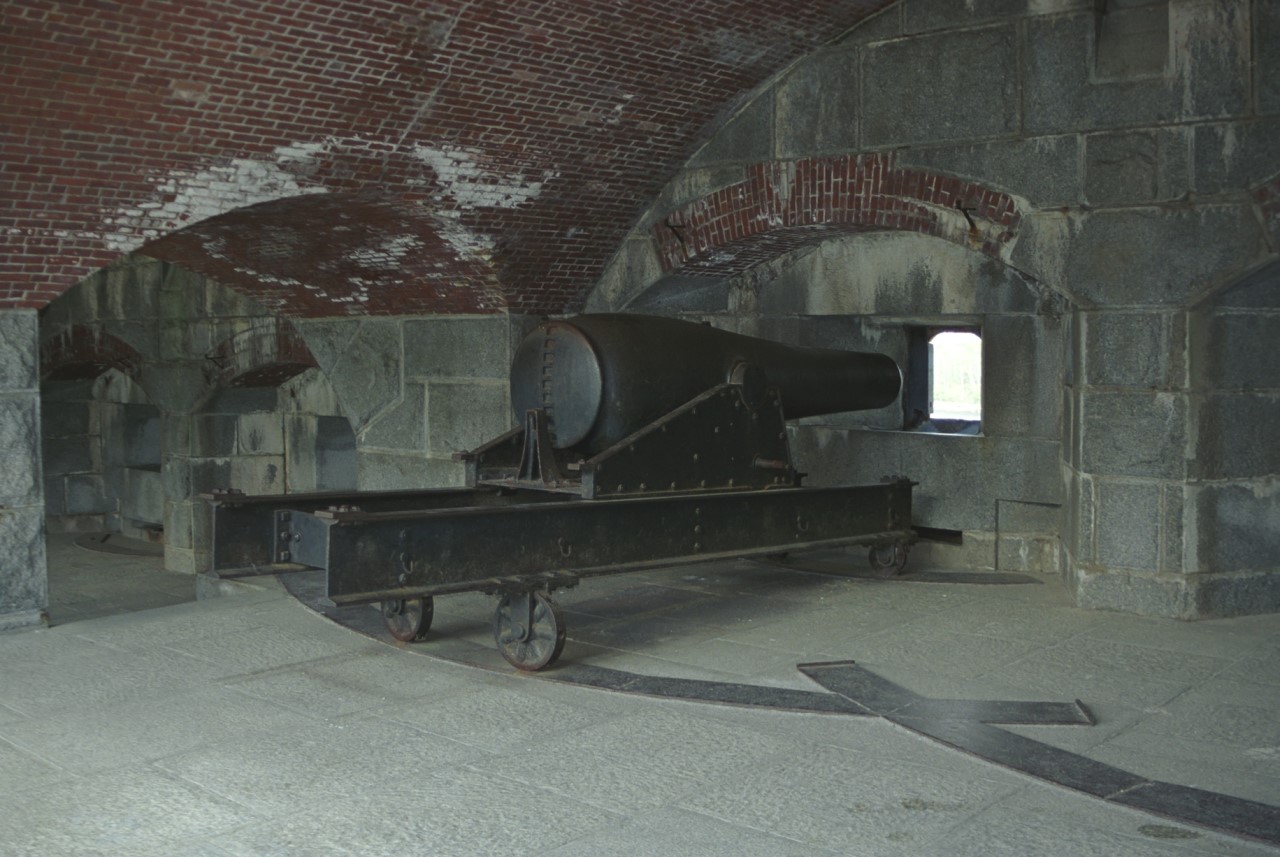
The interior of a casemate at Fort Knox
Armament evolved throughout the Third System era. Initially, it was the same smoothbore muzzle-loading guns that had been common both afloat and ashore for several centuries, although the standard size of shot grew from 24 lb to 42 lbs between 1816 and 1840. To maximize the effectiveness of these guns, fortifications were generally placed as low as possible, allowing the gunners to skip the shot along the surface. This greatly increased the danger space of the projectiles, and removed any need to worry about range. After about 1840, coastal weapons began to grow dramatically, a quarter-century before the same happened to shipboard armament. The first of these in American service were the Columbiads, patterned after weapons that saw limited service starting in 1812. These were heavy (8" or 10") low-velocity cannons designed to throw both shot and shells at much higher angles than previous weapons, giving them far greater range.
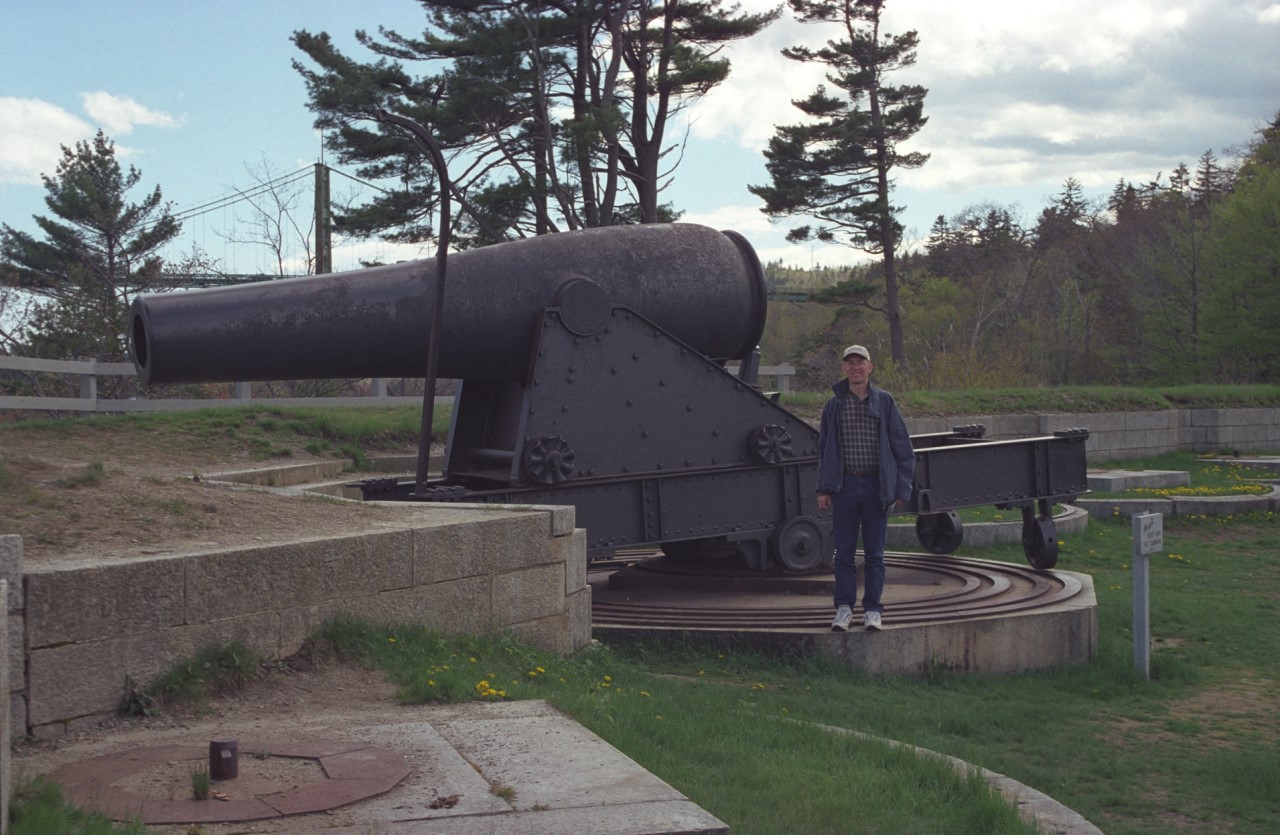
The Fatherly One with a 15" Rodman Gun
American coastal artillery was improved further by the efforts of Thomas Rodman, whose Rodman guns were tapered to mimic the stresses undergone during firing and cooled from the inside out while casting. This meant that the stresses built up from the cooling process ran from the outside in, opposing those produced during firing instead of adding to them as in a conventionally-cast gun. This greatly reduced the risk of the gun bursting, and over three hundred 15" Rodman guns, capable of throwing a 400 lb shot, were made and mounted at various fortifications during the 1860s, as well as 1,500 smaller weapons of this type. These went a long way to making up the gaps in heavy ordnance that existed before the Civil War. Fort Sumter, for instance, had only 60 of its 135 guns actually installed in 1861. This was common throughout the system, which was built on the assumption there would be time for mobilization, to bring the garrisons up to strength and to fit the remaining guns.
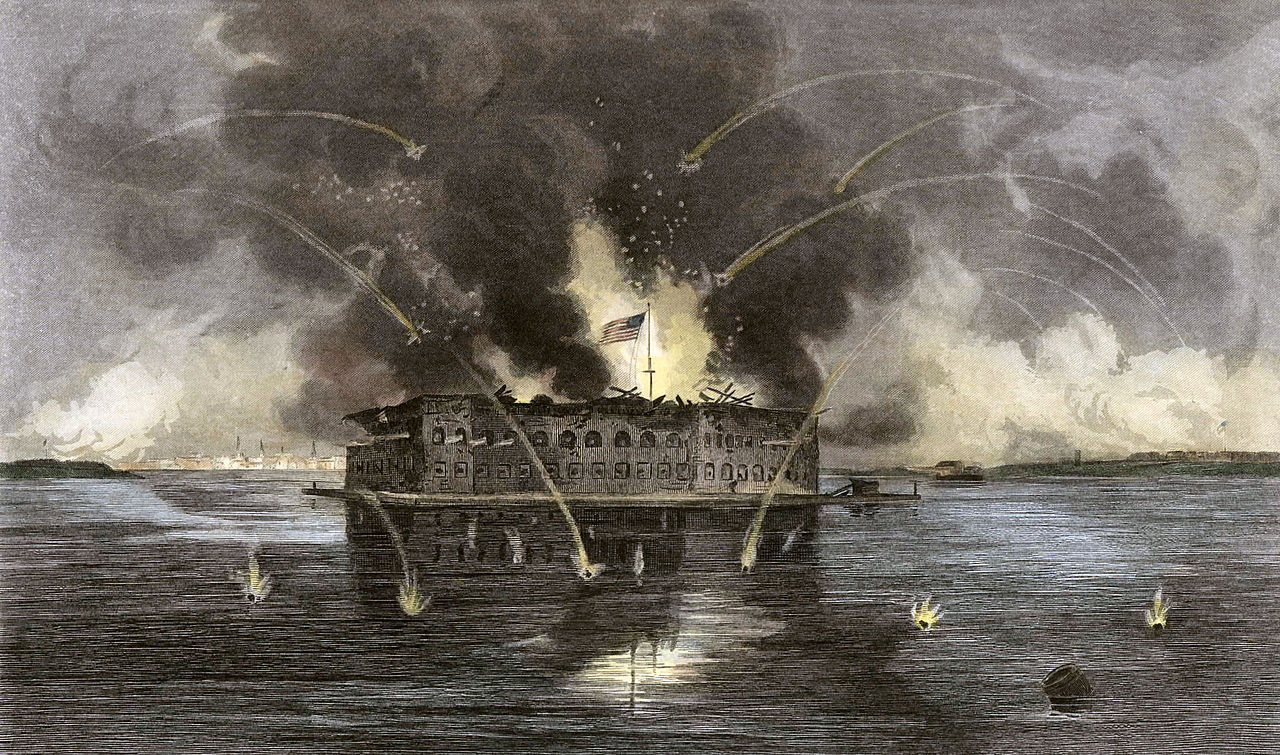
Fort Sumter
The crisis of 1861 left no time for such preparations, and the forts in the Southern states found themselves as Federal outposts in increasingly hostile territory. Most were seized or surrendered with only minimal violence, but Fort Sumter, in Charleston Harbor, South Carolina, was ordered to hold out. Finally, on April 12th, the nascent Confederacy lost patience and began to bombard the fort. After a day and a half, the Union garrison surrendered, and the Civil War began. Only three forts in the Confederacy, Monroe in Virginia and Jefferson and May in the Florida Keys, remained in Union hands throughout the war. Fort Monroe was famous as the site of the Contraband decision, which declared that escaped slaves were not to be returned to their owners, a small step to the eventual end of slavery in the US.
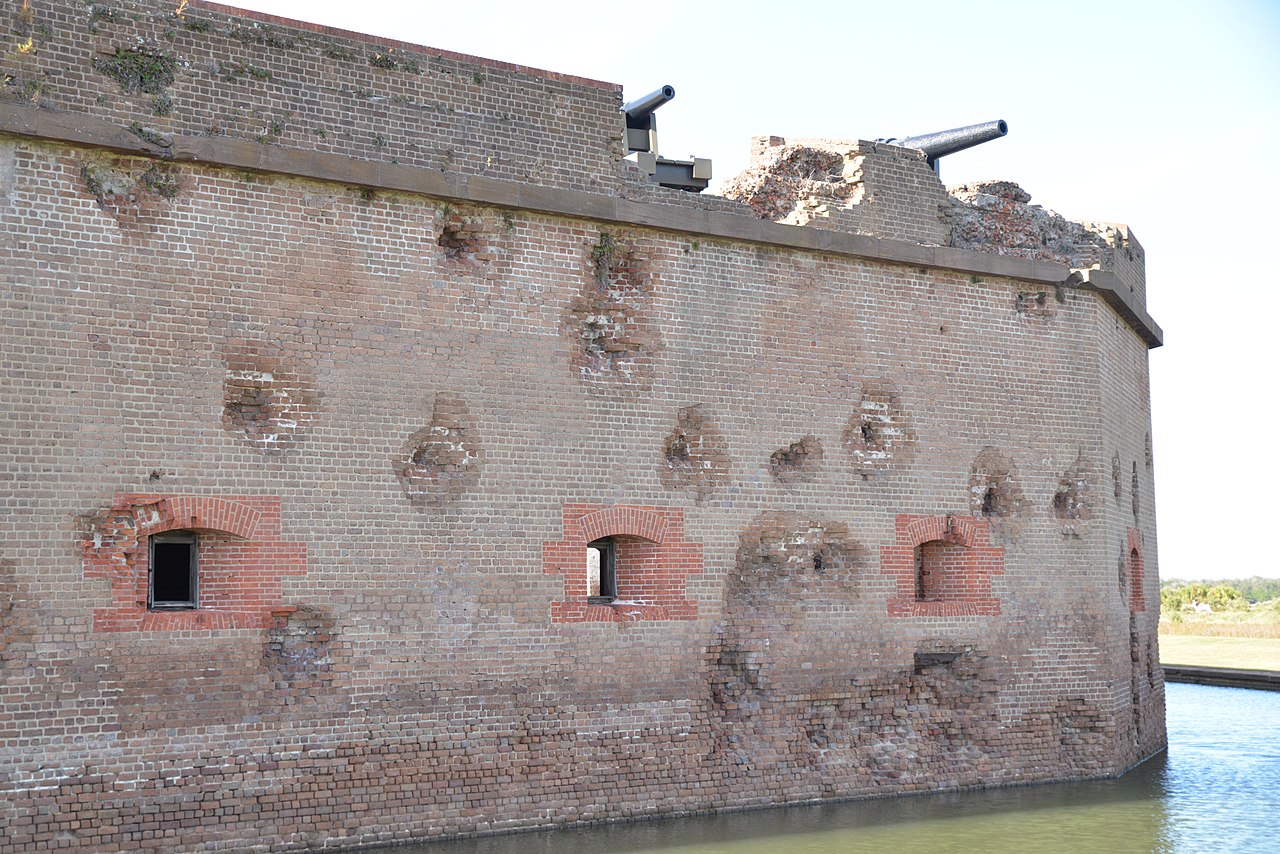
Damage to the wall of Fort Pulaski
While the Third System was probably the finest system of coastal defenses in the world in 1860, it was almost entirely obsolete a decade later, thanks to the rapid progress of guns and gunnery, particularly the wide-scale introduction of rifling. Almost from the introduction of gunpowder, the rule in land fortifications had been to avoid masonry walls, which, while resistant to single hits, could be battered down by siege guns concentrating on a small area. This rule did not apply to coastal forts, as shipboard guns were incapable of such concentration. Rifled guns, thanks to their longer shells and greater velocity, could do significant damage in a single hit on a masonry structure, a fact demonstrated in April 1862, when Union forces breached the walls of Fort Pulaski in 1862, when a 30-hour bombardment breached the walls of the Third System fort with the fire of only 10 rifled guns.
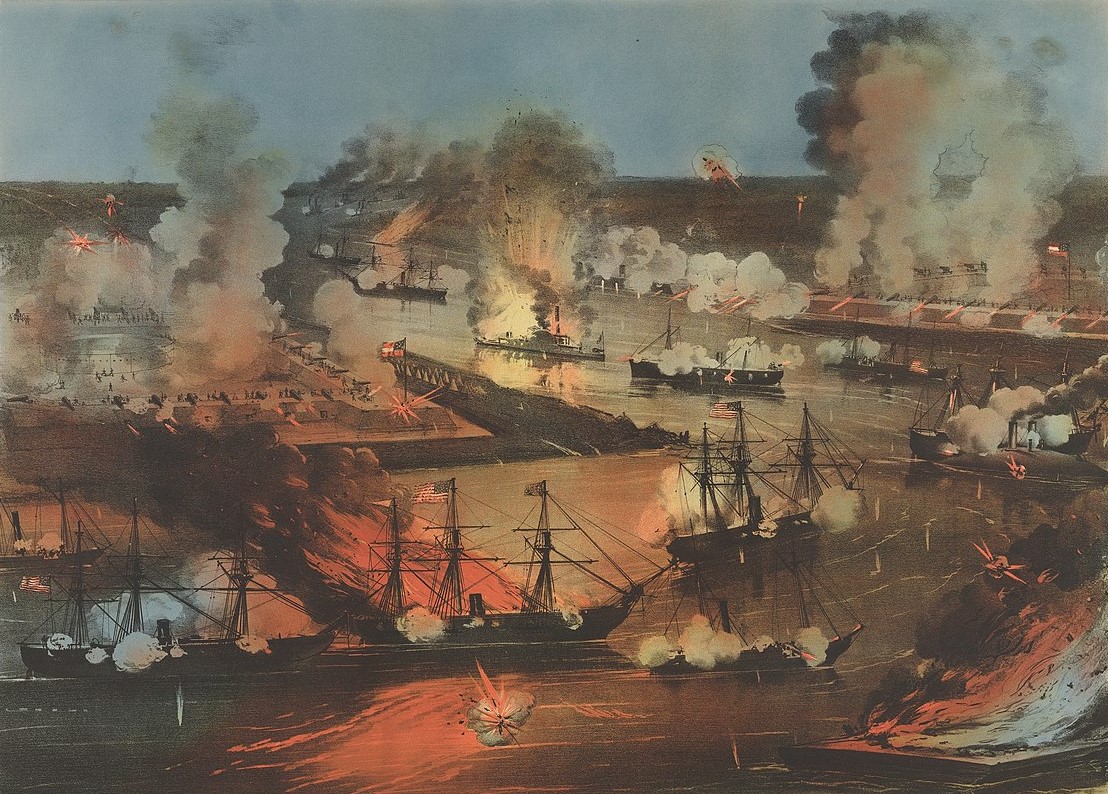
Farragut's forces pass the forts at New Orleans
On the whole, coastal defenses did not perform nearly as well in the Civil War as they had during the War of 1812. In several cases, unarmored ships were able to pass forts with minimal losses, despite the recent development of naval mines. Matter were made worse by the development of the ironclad, which gave ships a serious chance against coastal defenses. But none of these innovations were uniquely American, and there was a great deal of work going on elsewhere in the world. We'll take a look at these next time.
1 A parallel can be seen between this and the shift in mission that most western navies went through at the end of the Cold War, with an increased focus on the littorals. ⇑
2 All photos of Fort Knox courtesy of the Fatherly One. ⇑
3 Most sources indicate that these shutters were opened by the gasses escaping the gun ahead of the ball, but I rather doubt this. A 2" shutter would weigh 80 lbs/square foot, which makes each shutter a minimum of 400 lbs. Moving that much mass aside with the gasses from the muzzle before the actual projectile gets there seems unlikely. More plausible is that the shutter was opened right before firing. There appears to have been a small opening to allow at least coarse aiming before the shutters were opened, although I suspect the aim was fine-tuned before firing. ⇑

Comments
I am with you on the shutters not being opened by the gasses of the gun, the momentum required is just too much to move the shutters out of the way of the shot. Not to mention you are directing more hot gas back inside the casemate. However, if they were properly counterweighted could they somehow be closed by the muzzle blast? If so that might have generated the confusion.
So doing a little checking I think this is the case, the shutters were closed by the blast rather than opening, or at least that the closing is well-documented but the opening is not. In the biographical Memoir of Joseph Gilbert Totten published in 1866 by the National Academy of Sciences, it states:
Also this from the report made in 1957 by Totten to Secretary of War Jefferson Davis. (Now where have I heard that name before?)
It looks like that was it. It's been a while since I wrote this, and I mentioned they closed automatically, but I'm not sure if the mechanism was unclear when I was writing (the gun's recoil is the other major possibility), or if I just left it out.
If you haven't yet, I would recommend glancing at the report, simply to appreciate the thoroughness of the testing. An incredible amount of work was done, with 6 full-scale mockups with six gun ports each and a number of smaller targets subjected to numerous test shots. Sobering to think that the amount of research that went into fortifications that became obsolete so soon after.